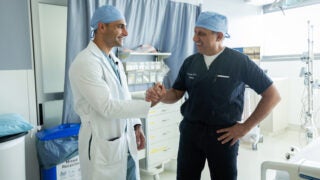Using campus downtime to get ahead on water conservation
With most buildings essentially clear of classes and students, the university takes a forward leap in sustainability by installing touch-free, water-saving faucets.
Swapping out a faucet isn’t simple when you’re doing it on a busy college campus. Water to the entire building may need to be shut off. Restrooms have to be closed while hundreds of students rush in and out between classes. Multiple departments must be notified.
At least, that’s the way it normally works. These aren’t normal times.
On every pandemic safety list is frequent hand-washing. Spurred in part by a drive to make that process easy and virtually contact-free, the university is taking a leap toward sustainability with sanitary side benefits.
With an investment valued at $1.5 million, USC is installing touch-free, water-saving faucets in 118 buildings on both campuses.
USC’s investment in water conservation part of long-term sustainability plan
Potential water savings could amount to hundreds of thousands of gallons a year. The new fixtures are rated at 0.35 gallons per minute and will cut water use by as much as 85%. Most of the touch-free faucets are powered by long-life batteries that will keep them operating as long as 10 years.
While water-saving faucets have long been part of the university’s plan, the pandemic shutdown allowed work on the touchless upgrade to move forward quickly. Complex scheduling issues, including potential building closures and water shutoffs, weren’t necessary because most of the buildings involved were fully or partially closed due to COVID restrictions. The swap-out, which started in October, will be completed by the end of February.
The high-speed project was a team effort involving building managers and several departments, including Facilities Management.
Water conservation is just one step USC is taking toward sustainability, a university priority under the leadership of President Carol L. Folt. Others include improved sorting for recyclables, solar panels and an investment in research.



